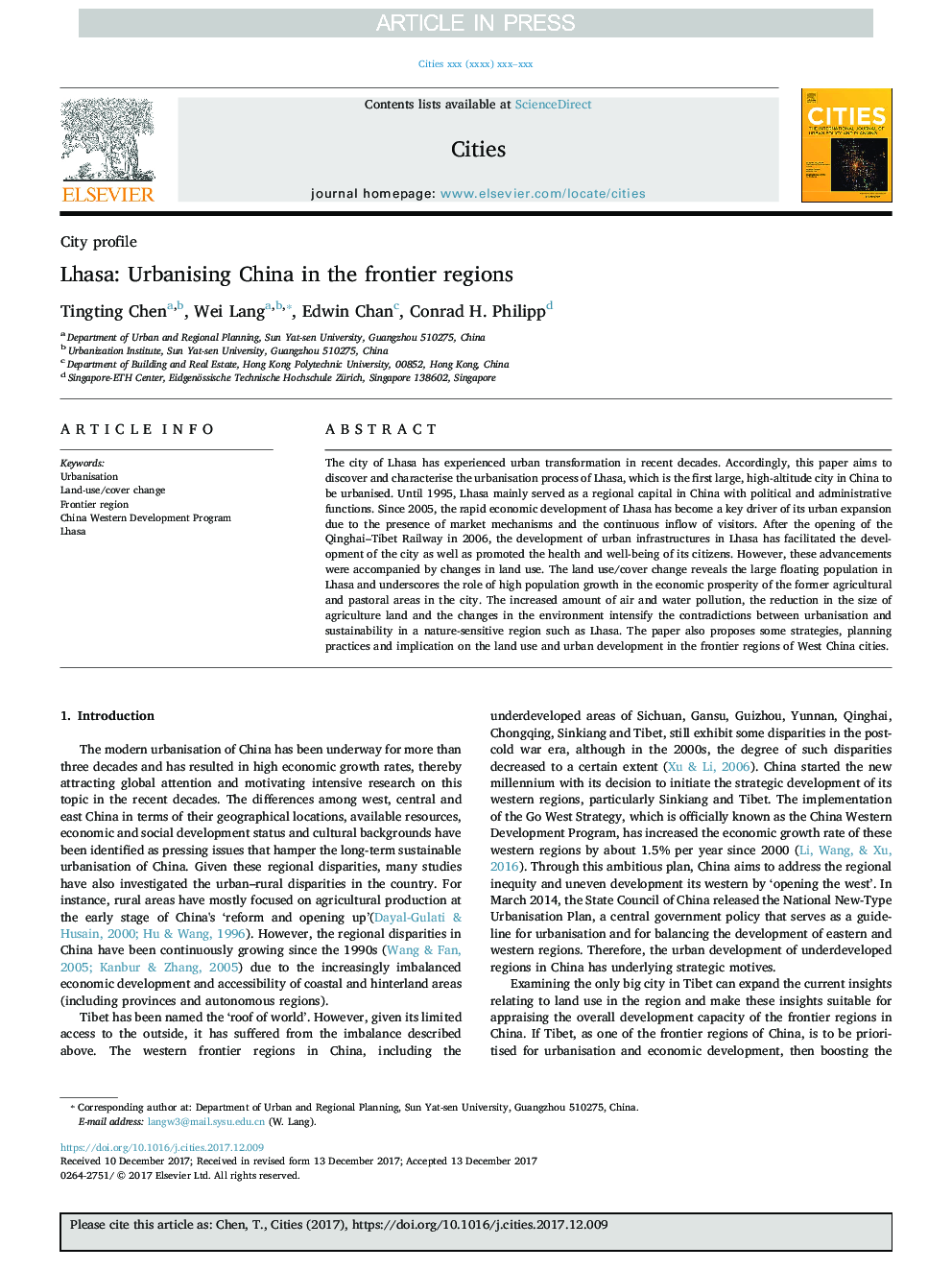| Article ID | Journal | Published Year | Pages | File Type |
|---|---|---|---|---|
| 7417639 | Cities | 2018 | 11 Pages |
Abstract
The city of Lhasa has experienced urban transformation in recent decades. Accordingly, this paper aims to discover and characterise the urbanisation process of Lhasa, which is the first large, high-altitude city in China to be urbanised. Until 1995, Lhasa mainly served as a regional capital in China with political and administrative functions. Since 2005, the rapid economic development of Lhasa has become a key driver of its urban expansion due to the presence of market mechanisms and the continuous inflow of visitors. After the opening of the Qinghai-Tibet Railway in 2006, the development of urban infrastructures in Lhasa has facilitated the development of the city as well as promoted the health and well-being of its citizens. However, these advancements were accompanied by changes in land use. The land use/cover change reveals the large floating population in Lhasa and underscores the role of high population growth in the economic prosperity of the former agricultural and pastoral areas in the city. The increased amount of air and water pollution, the reduction in the size of agriculture land and the changes in the environment intensify the contradictions between urbanisation and sustainability in a nature-sensitive region such as Lhasa. The paper also proposes some strategies, planning practices and implication on the land use and urban development in the frontier regions of West China cities.
Related Topics
Social Sciences and Humanities
Business, Management and Accounting
Tourism, Leisure and Hospitality Management
Authors
Tingting Chen, Wei Lang, Edwin Chan, Conrad H. Philipp,
